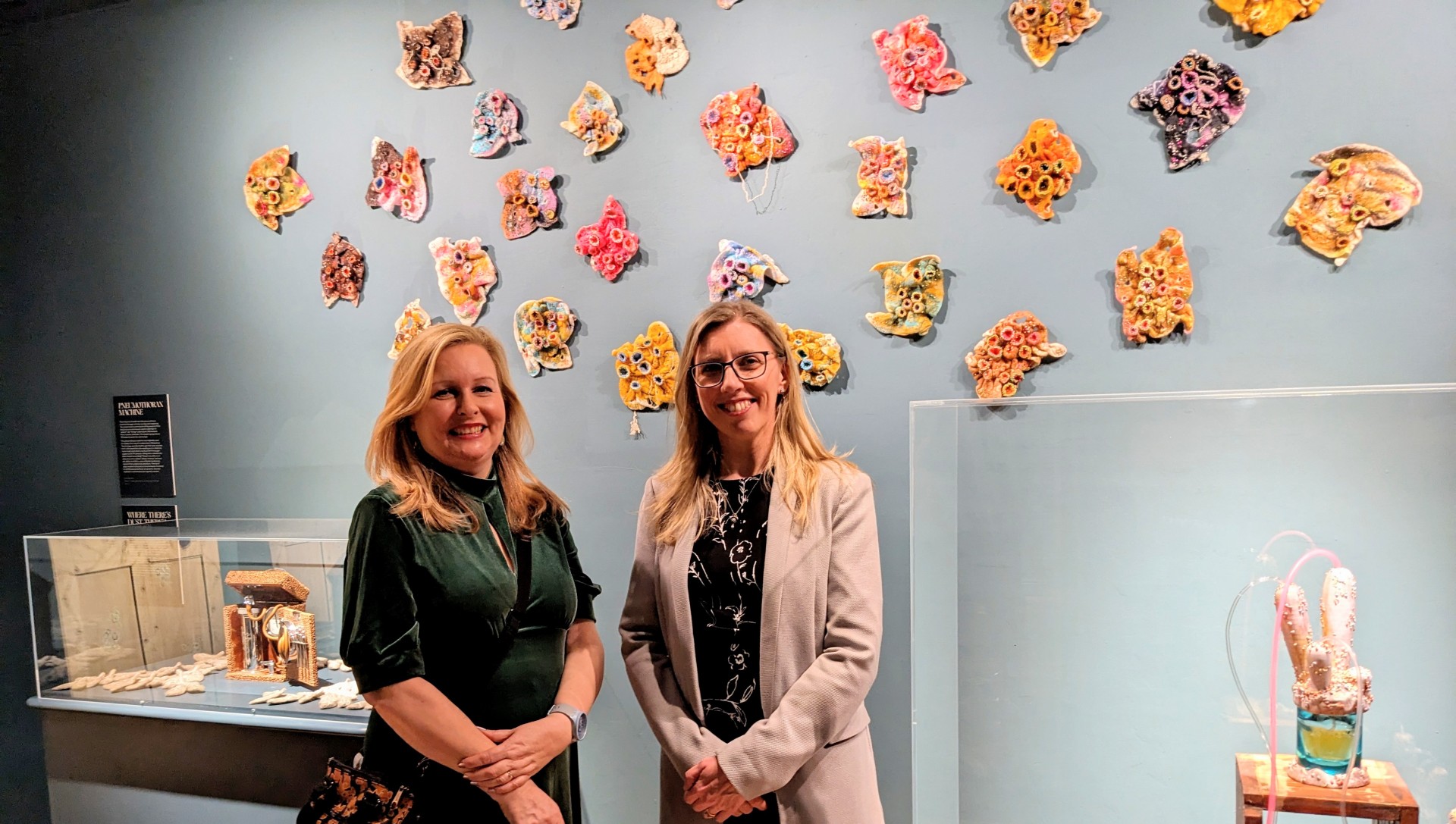RSPB St Aidans was the setting for one of the most ambitious productions of Leeds Year of Culture 2023. Theatre, movement, dance and music combined to tell a story of climate emergency to an audience who followed a 90 minute performance around the reserve’s Bowers Lake.
This was an issue-based drama, but not one that had a sole focus. Issues around belonging, natural environment at home and data usage, simmered alongside the central question of climate change.
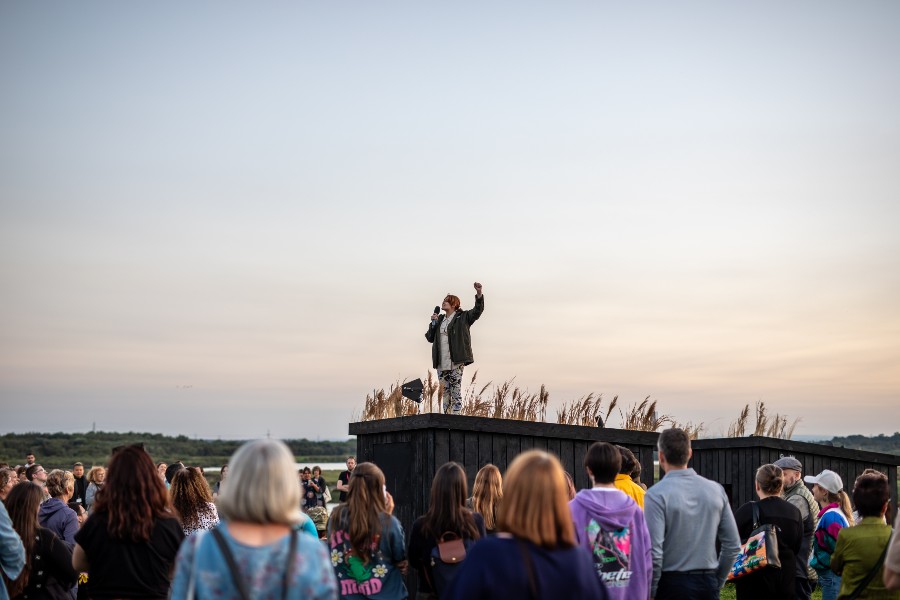
The promenade performance started in the picnic area outside the RSPB Little Owl Café. People were encouraged to arrive early and mill around as though they were attending a festival. The set was built to match the environment. Small wooden huts resembled bird hides but instead of looking out you looked in, to view ‘memorial videos’ of extinct birds. All the birds presented can currently be seen at St Aidan’s, although I have heard, but never seen the bittern.
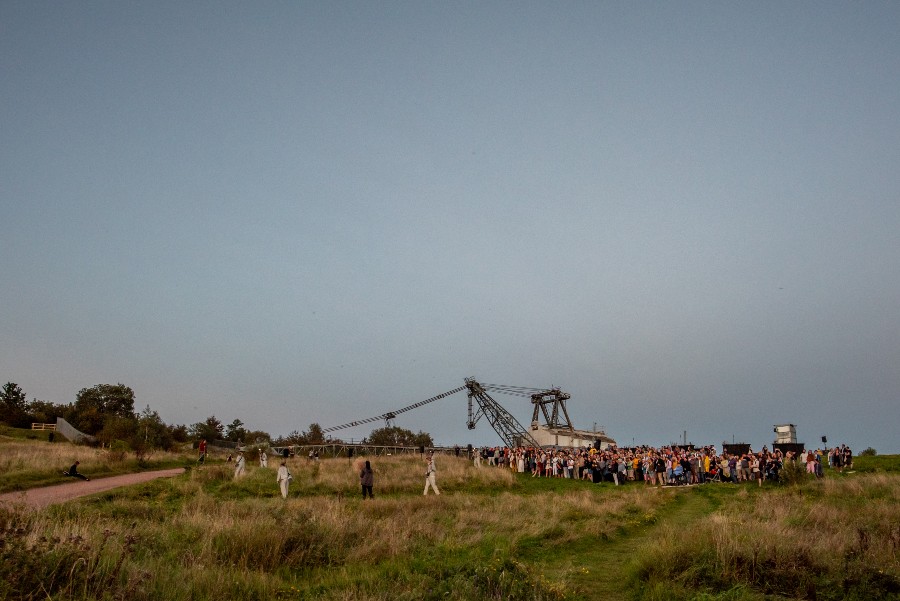
A colourful sightings board did not list current stars of the reserve: black necked grebe, bittern and bearded tit. These had been replaced with hoopoe, parakeet and bee-eater, birds that occasionally visit but may become more common as temperatures rise. Members of the cast, in 2050 persona, mixed with the audience. A young woman, seeing my binoculars, engaged me in a conversation about birdwatching. She walked on, telling me that she was going to search for a rare bird, the magpie.
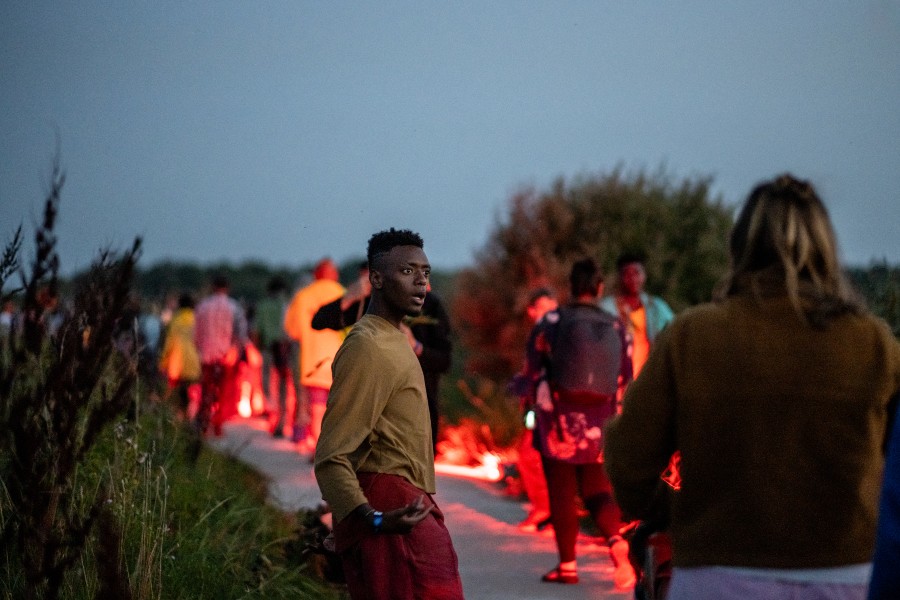
As the sun set, leaving a pink glow in the West, we were summoned to hear the opening speeches of Bird Fest 2050, the year that zero net should have been reached. An initially joyous spirit was quickly dampened by an insincere politician, shallow PR and calls of protest from the crowd. This is a society in crisis. We were simultaneously introduced to a group of time travellers and the production’s key character, Skylar. Together they take us on a journey across the lower part of the nature reserve, and across time.
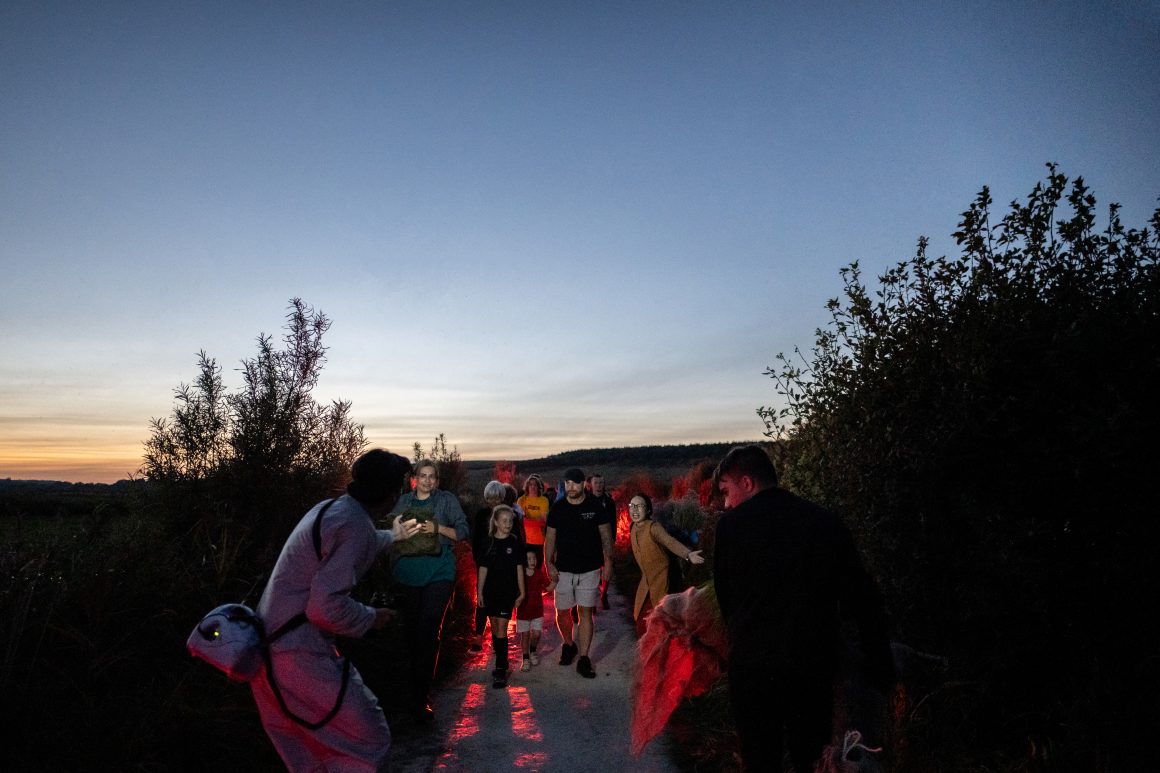
The part of Skylar is played by five different people. A Skylar appears at each of the key locations visited, differentiated by her yellow jacket. This makes the organisation of the piece easier as well as enabling the sharing of limelight amongst a number of young actors.

The cast includes 100 actors aged between 17 and 30. The National Youth Theatre and Compass, an arts charity supporting the integration of young refugees, have worked with the young people of Leeds to produce this high quality performance.
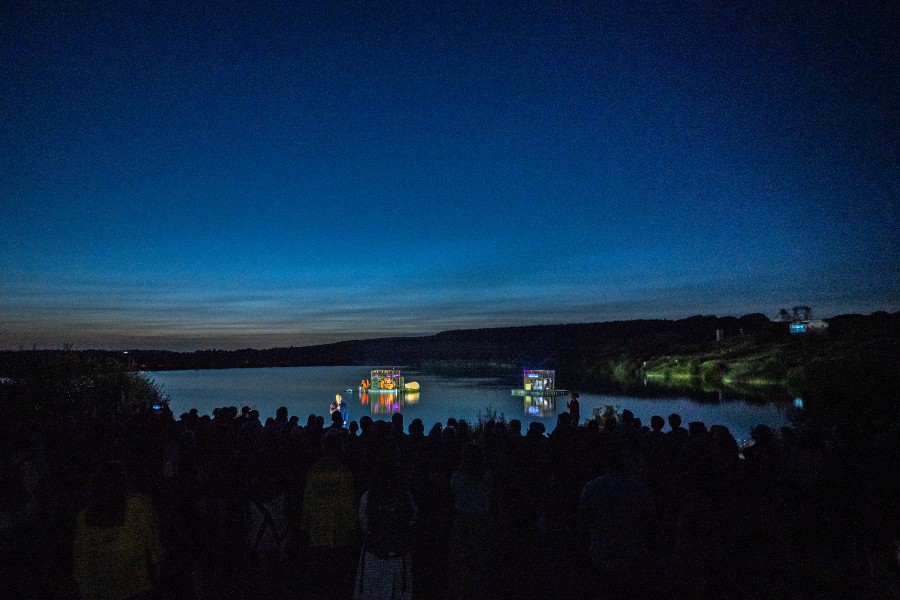
The logistics of the piece were impressive. The dates, timing and location of the production were arranged so that disruption to wildlife was minimised. Nesting season was over and main migrations had not yet started. By dusk, most birds has settled for the night. I heard a solitary coot croak as we passed the lake.
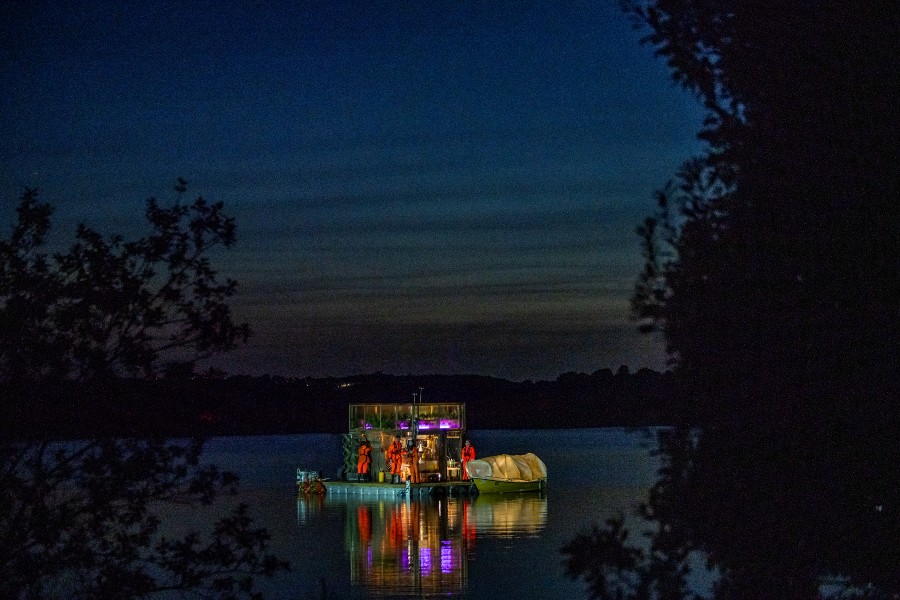
Gaggles of flying geese added spectacle and poignancy to our walk across the causeway that divides Bowers Lake from the larger reed beds. This section was a long walk which offered limited opportunities for dramatic intervention due the thin pathway between water courses. Our attention was maintained by members of the cast who passed us on the path talking about home, migration and the changing climate.
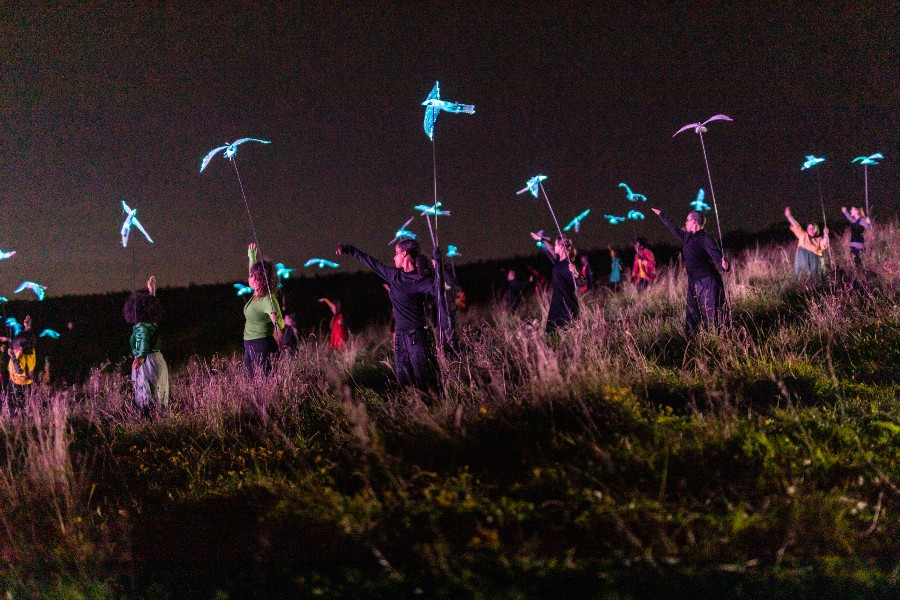
This is my local reserve and I tend to walk here most weeks. My attention was grabbed by a young woman bemoaning the fact that local children would never again enjoy a snow day. I was transported back to a walk in early 2021 when reeds emerged through patterned ice sheets spread across the wetlands.
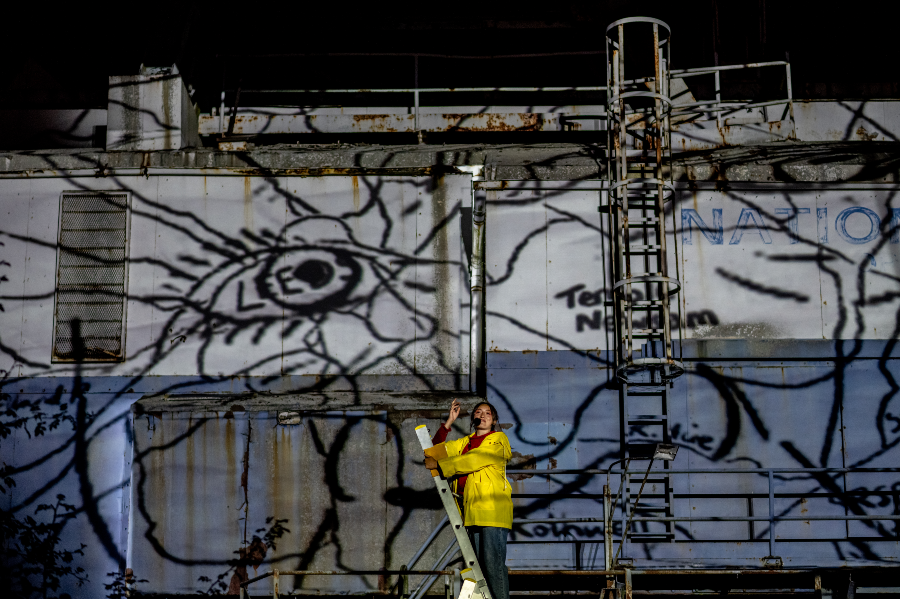
The evening was very warm. My thin cardigan was worn to protect against insect bites rather than provide warmth. The settled conditions aided acoustics and visibility but they also added a note of urgency regarding climate change. Walking in temperatures over twenty degrees in the dark, in September, in Yorkshire made climate emergency all the more real. The final performance on Saturday night had to be canceled owing to a thunderstorm. The weather seemed to be echoing warnings about temperature change and flooding.
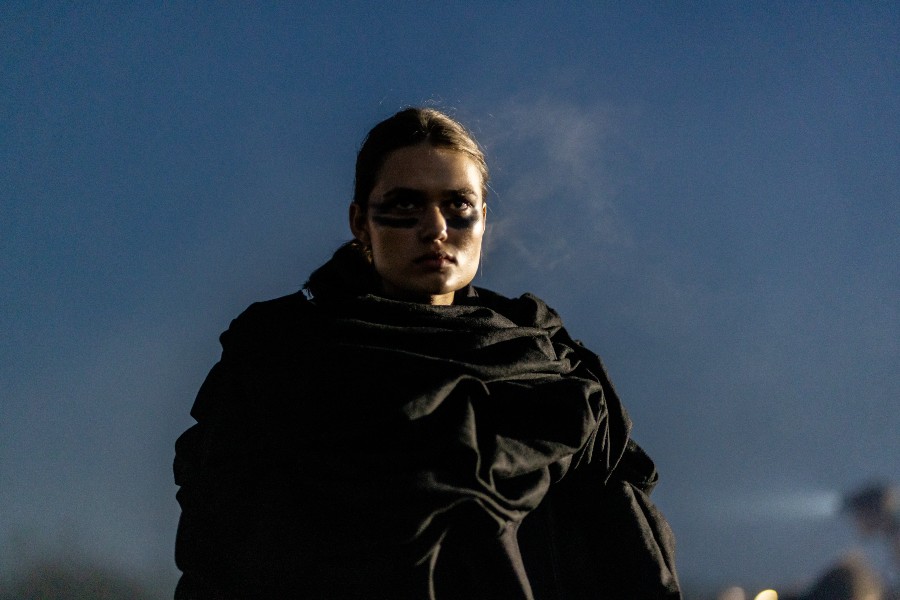
The script was written by Emma Nuttall, and the production was directed by Paul Roseby. Both will have worked hard to get this complex show up and running. Roseby has said that Nest is part of the NYT’s art and activism programme which unlocks facts and stories about climate crisis “by animating locations and unusual buildings in a dramatic way”.
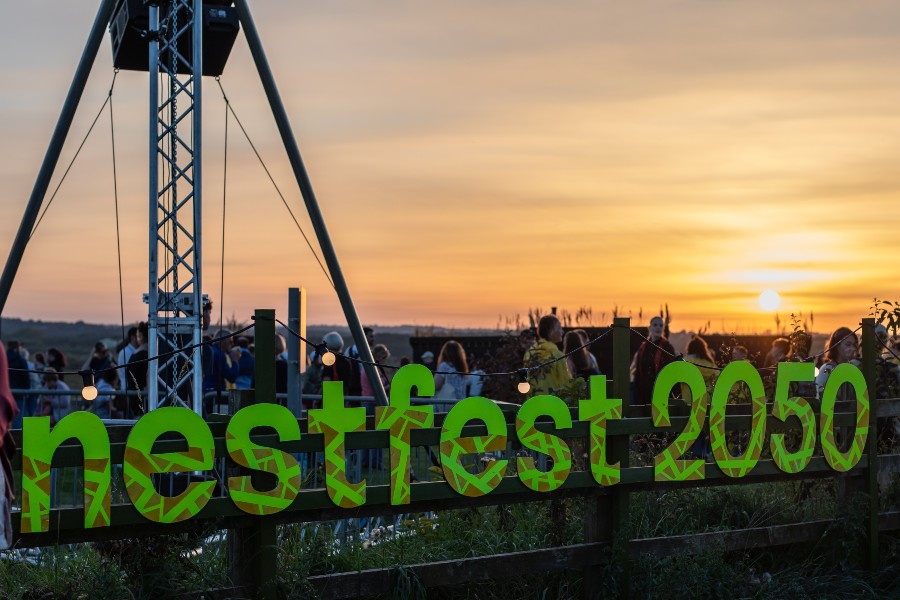
We stopped at various points where dance and drama developed Skylar’s story. By the time we reached the far side of the lake night had fallen. Illuminated birds became part of the show guiding us to the final stop, facing Oddball, the coal moving machine that is the last remains of the site’s industrial past.
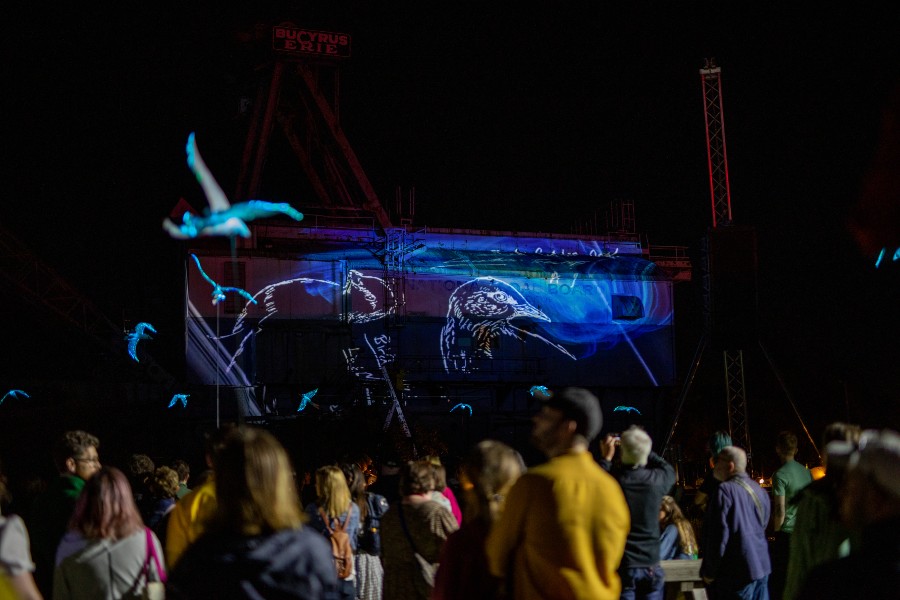
In the production’s finale, the side of the large coal mover was used as a projector screen. Leeds is well known for its Light Night projections. This illumination could have held its own as a stand-alone event but made an even better end to the the story of Nest, reminding us of how much we have to lose if we fail to protect our environment.
Nest took place from 5 – 9 September.
All photographs by JMA Photography.


